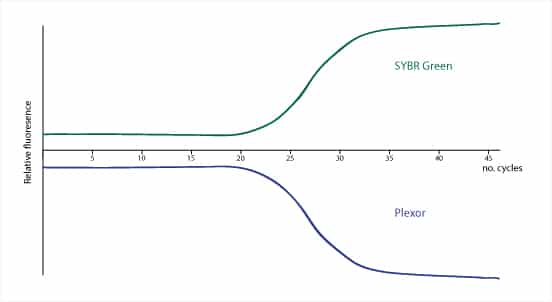I am sure many of you have been there. Everything is going smoothly, and your project seems to be working out perfectly.
And then there is this one PCR.
For some reason, it just won’t work. It is a black dot on your record. Even though I have a scientific mind, I have to be honest, I sometimes believe in witches. Well, scientific witches—by which I mean: valid, solid reasons, for why a PCR is not working!
It is so frustrating to spend time and energy on a PCR, and then go to check your agarose gel full of enthusiasm to find no band, a lousy smear, or many unspecific bands.
In this article I will give you some answers that may help you to solve all your problems. Or at least, your PCR problems.
First Things First… Look at Your Template
Take a good, hard look at your template. Get to know as much as possible about it. Does it have high GC content (over 65%)? If it does, beware. A high GC content will probably make your template much harder to amplify, but don’t despair, you can address this. To improve amplification, you may increase the annealing temperature, and/or add DMSO or add another secondary structure destabilizer to ensure that your GC rich template will be amplified.
Primer Design
Primer design is extremely important. Here are just some of the tips to keep in mind while designing PCR primers:
- Primer length: Primers should be around 18–22 nucleotides in length. This way, they are long enough to ensure specificity (by decreasing the probability of binding non-target sequences), yet short enough to bind to the template.
- Secondary structures: secondary structures will keep your primers busy among themselves, instead of just annealing to your template. Luckily, there are some bioinformatic tools that can predict the likelihood of secondary structure formation in primers, such as OligoAnalyzer 3.1.
- Melting and annealing temperature: Melting temperature (Tm) is calculated using the AT:GC content of your primers and is provided to you by your primer supplier. For your PCR to work, the double stranded primers need to be single stranded in order to anneal to your template—this is accomplished by heating your reaction to the proper Tm. Primers that have Tms in the range of 52–58 ºC generally produce the best results. Annealing temperature is the temperature at which the single stranded primers will anneal to the template: if the annealing temperature is too high the annealing process won’t be successful leading to low PCR product. However, if it is too low, then non-specific hybridization may occur, which leads to non-specific PCR products.
- Specificity: This is super important. If your primers are not specific, you can never be certain of the identity of your PCR product. Make sure your primer will only align with your target, and not any other sequence (e.g., pseudogenes) in your DNA template! You should always blast your primer sequence against your reference genome sequence before ordering any new primers to minimize problems with specificity.
- It is also a good idea to make sure your primers don’t anneal to any known polymorphism/mutation. Remember that allele dropout can happen if a primer pair can´t anneal to one allele, and this can lead to the loss of precious information. It sounds scary, but there are many bioinformatic tools that will help you accomplish the perfect primers.
Template Considerations
You should take into consideration that the problems with your PCR might have started long before you ever started your experiment!
Your DNA sample/template might contain PCR inhibitors. Inhibitors can be found in a variety of biological (e.g., organs, blood) and environmental samples or can be carried over during nucleic acid extraction.
Remember: The DNA sample must be as intact as possible if any PCR is to work. Some degradation is to be expected, but as long as you have enough intact target, you should be fine. It is advisable to check the quantity, purity and degree of fragmentation of your DNA before proceeding with PCR. If your DNA is too fragmented, then you will either need to redesign your PCR to amplify smaller fragments or revisit your DNA extraction protocol.
If you are having problems with amplification and you suspect that the template DNA is the culprit, then I advise you to run your PCR in duplicate. One reaction should contain the current template, and the other should contain a template that has worked perfectly in the past. Remember not to include any other differences between these two reactions!
Which brings me to…
Positive and Negative Controls
Remember that including a positive and a negative control in your experiment is essential for troubleshooting, if something goes wrong.
What happens when your positive control worked, but your sample didn’t? Well, maybe the DNA template was degraded, or the aliquot wasn’t prepared correctly. If the negative control shows amplification, you may have a contamination of reagents on your hands!
Nothing worked at all? Sometimes you just need to move away from the lab bench and rethink your steps, using the tips presented here. Don’t be afraid to change things until you can see that perfect band in your gel. But think carefully, start slowly, and change only one factor at a time until you find the culprit. And before you know it, you will have survived that difficult PCR!







